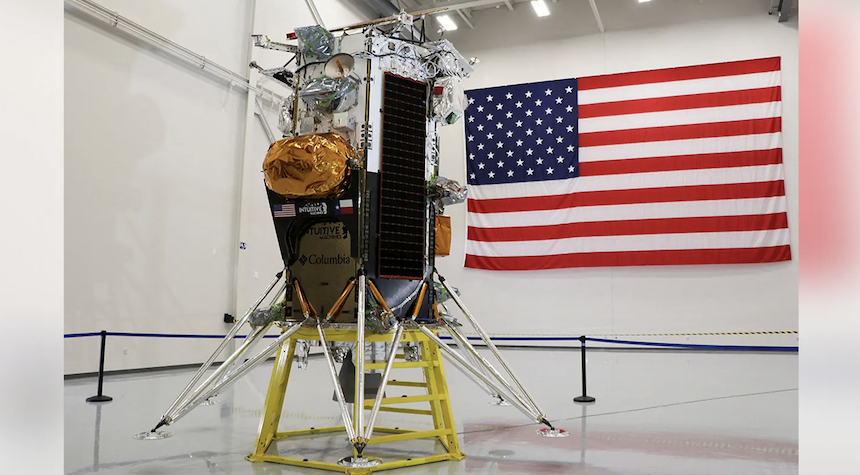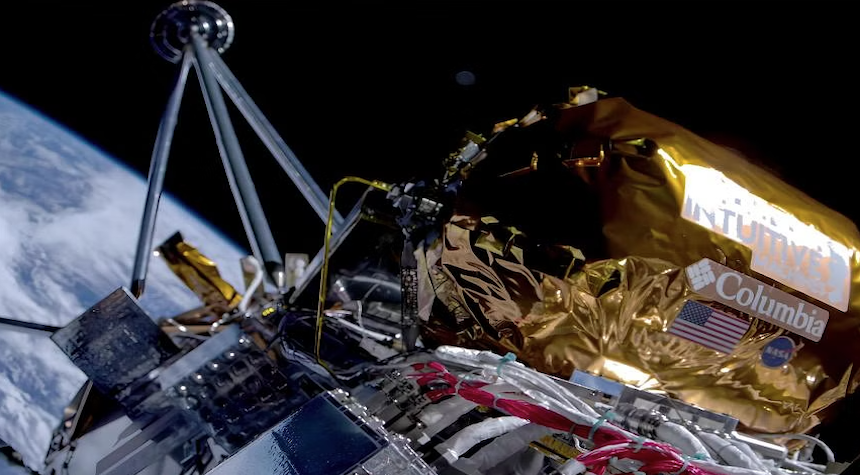The lunar lander landed at 6:24 PM ET on Thursday
On Thursday evening, the U.S. watched the Odysseus lunar landing lander from Intuitive Machines touch down in the South Pole area of the Moon near Malapert A.
It was the first time an American spacecraft landed on the moon since the last crewed Apollo missions over 50 years ago. The last time, an American spacecraft landed on the moon was in 1972 during the Apollo 17 Mission.
The lunar lander landed at 6:24 pm ET on Thursday. The mission, part of NASA’s Commercial Lunar Payload Services Initiative and Artemis Campaign, took place at 6:24 p.m. ET on Thursday.
The equipment that was transmitting the signal was not able to detect the lander, even though it was thought to be on the Moon.
 Odysseus is a six-legged robot lander. The Nova-C Lunar Lander, designed by Intuitive Machines and displayed at their headquarters in Houston, Oct. 3, 2023.
Odysseus is a six-legged robot lander. The Nova-C Lunar Lander, designed by Intuitive Machines and displayed at their headquarters in Houston, Oct. 3, 2023.
The lander’s transmitter had failed at landing, so the crew used a dish located in the U.K. to receive the signal.
A faint signal was detected nearly 15 minutes later.
Tim Crain, Mission Director of the Apollo 11 mission, said: “We are not dead yet.” He then told the team that the equipment on the surface was transmitting.

SpaceX launches rocket in Florida with moon lander
SpaceX Falcon 9 rocket launches from Kennedy Space Center’s launch pad LC 39A with Intuitive Machines Nova-C lunar lander mission on February 15, in Cape Canaveral.
 Moon lander in space
Moon lander in space
The Nova-C lander was launched into orbit on February 15 by SpaceX Falcon 9 rocket.
SpaceX launched the Nova-C Lander, or Odysseus as it is also known, from Florida on a Falcon 9 rocket that left NASA’s Kennedy Space Center at Cape Canaveral shortly after 1 am on February 15. This launch came after Astrobotic Technology’s lunar lander, which had propulsion problems during a January mission and failed to reach the moon, was launched.
The unmanned spacecraft is currently circling the Moon at 57 miles altitude and has been doing so since Wednesday. It remains “in excellent condition” despite being 239,000 miles away from Earth. Intuitive Machines mission control in Houston receives flight data and images of the Moon.
NASA stated in a press release that the instruments aboard the lander will “conduct scientific research and demonstrate the technology to help us understand the Moon’s environment and improve landing accuracy and safety in challenging conditions of the lunar south polar area, paving the way for future Artemis astronaut mission.”


